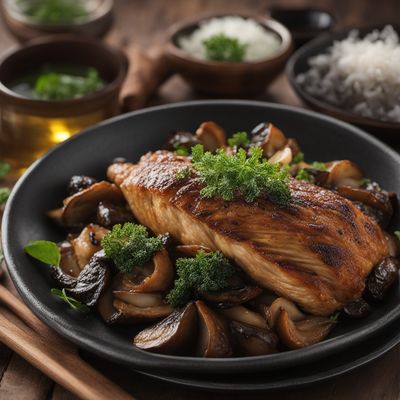
Ingredient
Other Aril spices
Exotic Gems: Unveiling the World of Aril Spices
Aril spices, also known as seed spices, are a diverse group of ingredients that come from the seeds or arils of various plants. These spices are prized for their intense flavors, unique textures, and aromatic qualities. From the fiery heat of cardamom to the earthy warmth of nutmeg, aril spices offer a wide range of taste sensations that elevate dishes to new heights.
Origins and history
Aril spices have a rich history that spans across different cultures and continents. Many of these spices have been used for centuries in traditional medicine, perfumes, and of course, cooking. They have been traded along ancient spice routes, influencing cuisines and cultures along the way. Today, aril spices continue to be cherished for their culinary and medicinal properties.
Nutritional information
Aril spices are a treasure trove of essential oils, antioxidants, and other beneficial compounds. They are often used in small quantities, but their impact on taste and aroma is significant. These spices can add depth and complexity to dishes while providing potential health benefits. However, it's important to note that the nutritional content may vary depending on the specific spice.
Allergens
Aril spices are generally safe for consumption, but some individuals may have allergies or sensitivities to certain spices. Common allergens associated with aril spices include mustard, celery, and sesame. It's important to read ingredient labels and consult with a healthcare professional if you have any concerns or known allergies.
How to select
When selecting aril spices, look for vibrant colors, strong aromas, and whole seeds or arils. Avoid spices that appear dull, faded, or have a musty smell. Opt for reputable brands or sources that ensure quality and freshness. Additionally, consider purchasing whole spices and grinding them at home for maximum flavor.
Storage recommendations
To maintain the freshness and quality of aril spices, store them in airtight containers in a cool, dark place away from direct sunlight. Whole spices generally have a longer shelf life compared to ground spices. It's recommended to use them within a year for optimal flavor. Avoid storing spices near heat sources or in humid environments, as this can lead to flavor loss and spoilage.
How to produce
Aril spices can be grown in home gardens or small-scale farms, depending on the specific spice. Research the specific requirements of the spice you wish to grow, including climate, soil conditions, and sunlight exposure. Some aril spices, like cardamom, require tropical or subtropical climates, while others, like coriander, can thrive in a wider range of conditions. Follow proper cultivation practices and seek guidance from experienced gardeners or agricultural experts for successful cultivation.
Preparation tips
Aril spices can be used in a variety of ways, depending on the specific spice and recipe. Whole spices are often toasted or dry-roasted to enhance their flavors before grinding or crushing. Ground spices can be added directly to dishes during cooking or used as a seasoning. Experiment with different spice combinations to create unique flavor profiles. Remember to start with small amounts and adjust to taste, as some spices can be quite potent.
Culinary uses
Aril spices are widely used in cuisines around the world. They are essential ingredients in Indian, Middle Eastern, and Southeast Asian cooking, where they are used in curries, rice dishes, desserts, and beverages. Aril spices also make appearances in European and American cuisines, adding warmth and complexity to dishes like gingerbread, mulled wine, and pumpkin pie.
Availability
Aril spices are commonly available in grocery stores, specialty spice shops, and online retailers. They can be found in both whole and ground forms, packaged in jars, bags, or bulk bins. Some rare or exotic aril spices may be more challenging to find and may require sourcing from specialty suppliers or international markets.


